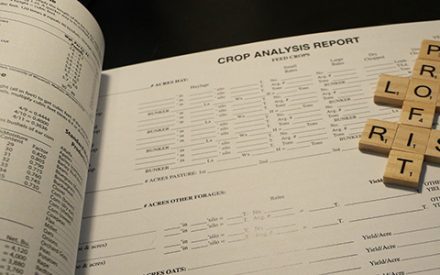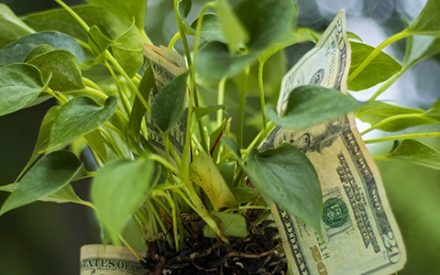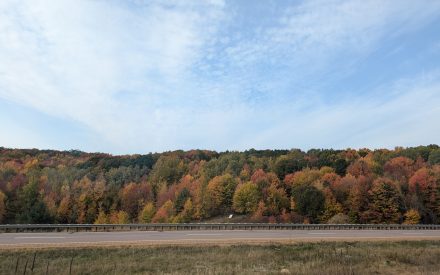Video Summary
Join Francisco Arriaga as he explores the latest soil conditions and management strategies for spring 2025. This presentation covers key aspects of soil moisture and temperature, highlighting regional variations across Wisconsin. Learn practical tips for assessing soil moisture, managing tillage and cover crops, and understanding the impact of soil compaction. Francisco also discusses the importance of residue management and provides valuable tools for monitoring soil conditions. Whether you’re a seasoned farmer or new to soil management, this video offers essential guidance to optimize your spring planting and ensure healthy soil.
Resources
Transcript
0:05
We’ll jump right on it then.
0:07
Oh, good afternoon, everyone.
0:09
So I’m going to try to give you a little little recap and and some whole reminders, I guess of things that I’m sure you’ve heard me in the past talk about when we’re talking about or considering soil management, especially in the spring.
0:23
So got this divided by soil moisture and temperature.
0:26
So let’s look at those.
0:30
Steve did an excellent job talking about the soil moisture conditions.
0:33
This is soil moisture conditions from March 31st to April 6th.
0:38
So that for that week, as you can see on the left, you have the topsoil surface to 6 inches.
0:43
On the right is the subsoil, zero to three feet.
0:47
And you can see the scale red being dry, so 5% or or less.
0:53
And then blue higher water contents in the soil profile.
0:58
So what we’re observing like, like see what I was talking about, we had decent moisture conditions for most of the state.
1:06
And so that is encouraging even in the subsoil.
1:08
So that, that’s really good.
1:10
You see that there’s some kind of lower moisture around Adams Waushara counties.
1:17
And so well, that’s our central sands.
1:19
So those soils tend to have lower water content.
1:21
So, so we have so much irrigation there. Looking at kind of picking on, on three regions across the state, which might be easier than looking at that that map.
1:32
We have Rock County, Chippewa County and Brown County just selected some, some locations somewhat at random in those counties.
1:39
And we can see here the moisture again, the blue line here is the the average temperature on the surface zero to 6.
1:48
And then, and then we have also the maximum water content on the red at the same zero to 6 inches.
1:58
And so one thing to note is that the scales on the vertical axis of moisture.
2:03
And so if you multiply that by 100, that gives you the percentage if you want.
2:06
It’s volumetric water content are very different going from one county to the other.
2:11
So to note here, it’s that Chippewa, it’s a little bit drier right now, Chippewa County, then Brown and and Rock County when we look at these.
2:23
So something to consider that there are variabilities across the state and also within counties there will be differences.
2:32
So that’s one of the reasons too.
2:33
So if you throw in also then management tillage, cover crop use, so on and so forth, soil type, going out and getting your hands dirty so you can assess soil moisture in the field.
2:46
You can see here a scheme that was developed by NRCS a while back varies a little bit by by soil texture as you can see here.
2:55
But basically what you’re doing, you grab a clump of soil or or amount of soil and you try to form a ball in the palm of your head.
3:02
You squeeze it out, you know, So if it forms a a weak ball, typically that soil tends to be moist.
3:12
Soil that is drier will not be as cohesive.
3:15
They won’t stick together.
3:17
We have soil that it’s not a sandy soil.
3:20
So you have some organic matter.
3:22
You should see some discoloration of the organic matter in your on your hand.
3:26
And and so that’s all should be kind of sticking together and kind of leaching, I guess if you will, some of the organic materials on your hand and stay in your hand a little bit if you want to go this.
3:36
So this is the kind of the cheap route.
3:38
If you want to go fancy a route, there are several companies that sell moisture meters.
3:43
Costs vary, typically about $1000.
3:46
So it’s not a small investment to do unless you have irrigation and maybe you want to integrate into your irrigation management.
3:53
But I think doing it by hand and also experience, it’s a good way to assess soil moisture.
4:01
So talking about moisture in the field, what things affect that?
4:06
So tillage obviously, So the residue management, not just the tillage but also residue management at the combine point affected as well as sole compaction.
4:18
And I’ll talk about that here in the next slide.
4:20
Well, two slides from now. Cover crop termination now in the spring, that’s another, another thing to keep in mind.
4:27
So if you have a cover crop in your field, as long as that cover crop, is green, it is growing, it’s transpiring, it’s pulling water out of the ground.
4:36
Now you can take it that either either way.
4:38
So if it’s a drought year, like last year and you had that cover crop, it’s actually taking some moisture out of the ground that could be, could have been used by your, your cash crop, you know, your summer crop.
4:49
Whereas if it’s a wetter year, you could try to use that cover crop as a, as a way to dry that soil.
4:56
Because if it’s green, it’s pumping water, it’s evapotranspiring, it’s taking water out of the ground and it will be drying that soil.
5:01
So it depends on your, on your conditions and what your goals have.
5:06
Obviously, soil moisture is very important for planting and, and good seed to soil contact.
5:11
And this is where set up of your of your planting equipment it is, it is important.
5:18
So again varies all these conditions are going to vary depending on your tillage management, cover crops, what conditions are in your field texture, what have not, and equipment that you have available for your use.
5:32
So other things to consider with moisture, it’s manure application.
5:36
So obviously soils that are wetter are going to be more prone to run off.
5:40
I’ll, I’ll talk a little bit about Jerry mentioned the runoff risk advisory tool.
5:44
So I’ll talk about that here in a little bit too.
5:46
And also keep in mind too, that in order for fertilized herbicides, pesticides, all, kind of all, all those kind of inputs, they need moisture a lot of times to be activated and, and be useful in the, in the, in the field so that they, so they can work and, and, and, and be effective.
6:05
On the flip side too, if it’s too though, if it’s too wet, then that can create problems where they’re less effective or they leach out and, and things like that, that we don’t want, not only from the environmental aspect, but also they’re not doing the job that we want them to do to help get us good yields.
6:26
So talking a little bit about soil moisture, and this is sort of a little bit thinking about the drought last year is that if you think about tillage and reduced tillage, we know that that leads to a better soil health outcomes.
6:39
Cover crops on top of that, actually it’s even more beneficial, but that management of that residue will affect and maintain that moisture in the soil or you know, prevent erosion and runoff too.
6:55
So think about, you know, the value you’re getting from the residues also the long term effects.
7:01
So that’s the crop race is more of a year, year to year thing.
7:04
But think about also long term residues, long term effects in, in benefits from reduced tillage that help physical properties and therefore will help improve soil biological properties and also chemical properties.
7:21
So keep those things in mind, you know, so not only talking about or thinking about this season current conditions, but also what can I do with my management for long term goals and benefits to my operation.
7:38
Having said that though, tillage a lot of times is needed.
7:41
We have compaction, we have rutting and all those kind of things.
7:44
If you need to incorporate a certain material like a lime or if you have manure, then we do have to do some kind of soil disturbance obviously.
7:54
But those are sort of things that are necessary and sometimes you know that they do have a benefit to to the system.
8:05
I mentioned compaction a little bit and I just briefly want to reiterate here, what you’re seeing here is a water release curve for three soil conditions with the blue being the better soil bulk density, if you will, and then the grey being soil that is compacted and that orange is somewhere in between.
8:24
But having said that, it is that soil that is compacted will have a lower water holding capacity, so less water for your plants to, to use during the growing season.
8:34
It also will affect infiltration and water drainage.
8:37
So it can result in, in, in issues.
8:39
So, you know, if we have compaction problems, we need to address them.
8:43
That’s a whole compaction management.
8:45
That’s like a whole separate talk here.
8:47
But just wanted to keep that in mind that all these, all these things kind of tied together.
8:53
I mentioned soil health from the aspect of of the tillage, but also soil compaction can be detrimental.
9:00
If you think about soil and the porosity of the soil and how compaction can reduce porosity in the soil.
9:07
That is affecting essentially the habitat where the biology in the soil is living.
9:13
They’re living in this pores within the soil that have these water films.
9:18
So it’s kind of an aquatic environment where not only bacteria and fungi are living in there, but also a certain arthropods and other, other critters are in there too.
9:29
And then just to kind of wrap up this, this, this thing I mentioned this kind of on passing a second ago, but residue management begins at the combine.
9:37
So we’re talking about the spring, but we need to be thinking the, the, the management of these of the system and soils for the entire entire season.
9:45
So whatever we did in the fall on 2024 is affecting what we have now in 2025 in this this spring.
9:52
So keeping those things in mind that that what we decide to do today or tomorrow will affect, you know, things down the road too potentially.
10:04
I just talked about cover crops.
10:06
I’m not going to dwell on that more.
10:08
So let’s switch gears and talk about soil temperature conditions and soil temperature in general.
10:14
So again, Steve talked a little bit about this.
10:17
This is from the runoff advisory run a freeze advisory forecast tool that is freely available online for Wisconsin.
10:26
They actually have, if you look on the top, they have a a different types with data.
10:31
So there is a zero to 10 inch data available there.
10:37
It’s kind of coarse, but it gives you kind of an idea of how things are progressing.
10:41
There’s a slider bar if you ever gone to that website to play.
10:43
So on the left you have April 10th, on the right you have April 14th and kind of seeing that in those four days, the soil temperature on that 10 inch model data.
10:54
This is actually a model has has increased.
10:57
So that’s a good thing, but it’s it’s a way to kind of give you an idea how our conditions in general, you can go to something a little bit more more specific.
11:06
Now.
11:06
We’re thanks to a lot of the work that several researchers led by Chris Kucharik, we have now a very good decent network of weather stations around the state which was much needed.
11:21
And so these, they are from the Wisconet, these are actually I think I grabbed, grabbed these this morning.
11:28
I believe so they’re fairly recent, less than 24 hours old.
11:31
So we have soil temperature at 2 inches, soil temperature at 4 inches.
11:35
You can see that north to South.
11:37
Obviously there’s going to be a difference.
11:39
Steve, talk about being frost.
11:40
There’s still some frost in the northern part of the state.
11:43
You can see that a little bit on some of these soil temperatures.
11:47
But we’re not there yet, right?
11:49
We’re not to that minimum temperature of 50°F for, for seeds to be able to germinate and just develop properly.
12:00
So, you know, patience I guess is, is the key.
12:03
But are we going to go there, get there?
12:07
I think probably within a week or so we might be getting much, much closer and, and, and start seeing more planting equipment out there.
12:15
Again, management at the field level will affect what’s happening there.
12:19
So I always big proponent of going out to the field, walk the field in in in assessing conditions for a particular field.
12:26
You can use a meat thermometer for this very easily.
12:29
You can buy it at Walmart, Target.
12:33
They’re fairly inexpensive.
12:34
So on the right I have two examples.
12:35
There’s a annual analog gauge type setup that’s about 5-6 dollars. On the bottom,
12:43
There’s a digital one that’s about $15.00.
12:46
I like the digital one because it, it works a little bit faster, but you know, basically you take this out to the field, they usually sense towards the tip.
12:55
So what I do for this, I’ve used this type of setup for research.
13:00
Put a piece of tape, you know, I usually, you know, interested in looking at zero to 2 inch.
13:04
So put a piece of tape at that 2 inch mark and it’s always inserted to that depth.
13:08
You have now a marker there and measure that throughout different locations in your field and, and you get an idea of what’s what’s happening in your particular case.
13:20
The other, the other thing to keep in mind is to try to take the measurement at the same time of the day to compare conditions.
13:24
I would say this time of the year, if you’re kind of looking at how are my field conditions and you’re kind of looking at that 50°F mark, take it earlier in the morning, right?
13:35
That gives you sort of an average for what happened during the night, what condition a seed that might have been planted would be experiencing.
13:42
And so if you start seeing at at in the morning, early in the morning, six, 8:00 in the morning, 50 degrees, 52°, like you know, you know that that temperature will increase during the day.
13:53
So maybe maybe you’re there and ready to go and, and plant.
13:59
But the other thing to keep in mind too is it’s just air temperatures.
14:02
And so here we are looking at our freeze dates.
14:05
And so we find that here as a 28°F on the left you have the average last spring 20° freeze date.
14:13
And on the right, you have the kind of the latest.
14:17
And so just again to pick on, on this locations, Chippewa, Brown and Rock.
14:23
So if you look at the average for Chippewa, it’s April 26th, for Rock county, April 13th.
14:28
So we’re approaching those.
14:32
And then if you’re looking at like when, when is the latest potentially that these freeze, freeze temperatures could happen, We got a range of April 26 in Rock County.
14:44
So we’re not quite there yet, but approaching that and all the way to May 9th in in Chippewa County.
14:50
So some of the things that have been mine.
14:52
So it’s not just only about the soil, but there’s obviously the other things that we need to consider.
14:57
So another way to look at this is like how is the state greening up?
15:02
So what we have here, it’s NDVI data, data collected from satellite.
15:05
On the left we have NDVI from March 24th to March 30th and on the right, March 31st to April 6th, the most recent day available.
15:14
And you have NDVI numbers here with the yellower darker colors, if you will, indicating lower NDVI values and then the greener colors indicating higher values.
15:23
So what we want to see, it’s a greener colors here indicating more vegetation.
15:29
And so this is the normalized difference vegetation index.
15:34
So on the left, the range was about less than .05 to .7 with an average about .3.
15:42
And on the right you see that the range is similar, but our average is is going on going up slightly.
15:47
And you can kind of see that visually here.
15:50
Another way to look at this and how how things are progressing throughout the state is using this Vegetation Condition Index.
15:58
And what it does it’s it compares NDVI data to past years, usually three to four years.
16:03
And what it does, it gives you an assessment of the current conditions relative to to past years.
16:09
So greater values and these are multiplied by 100 gives you a percentage if you will, but it’s an index, so no units.
16:15
So greater values here.
16:17
So bluer colors relate to good vegetation state and lower values.
16:22
So the pinker redder colors associated with bad vegetation state compared to other years.
16:27
So what we see here is that in the kind of the northern part of the state, especially the northwest, we see better conditions relative to southern part of the state.
16:37
And then we see kind of the band there on the eastern part near Lake Michigan that that we have conditions that are somewhere in between with some green kind of a spurs around there.
16:47
Those conditions obviously the lake has a big effect on temperature and so that that that sort of kind of highlighted this with here.
16:55
But looks like we’re we’re progressing and hopefully this will change soon within the next weeks or so.
17:04
Last but not least mentioning runoff risk.
17:07
So there’s a lot of manure that needs to be applied at this time of the year.
17:13
So the runoff risk advisory forecast tool, just putting a plug for it right now.
17:17
If you look at this legend on the left, most of the states in that NRE or no runoff expected condition, which is great.
17:25
So good conditions for manure spreading right now as long as your soil is not too wet and you’re not making a mess with rutting and so on and so forth.
17:35
So what these take is in consideration, it’s the forecast for precipitation and also how wet the soil is. Like I showed you a second ago,
17:46
There’s other information available here.
17:48
So there’s these tabs that you can kind of click and look at precipitation and soil temperature and and soil saturation or moisture, if you will.
17:56
So here’s the example of soil temperature.
17:58
And not only that, you can actually go to a location and right Click to get a forecast detail as you can see here on on this box.
18:06
And then you kind of get an output that shows you sort of what’s been happening there.
18:14
So a little bit more more information and more detail too.
18:17
So there’s a lot of good information here if you’re willing to go and explore and and find that out.
18:23
And with that, I’m just going to leave it at that and take any questions, if there any.
18:29
Thank you for your attention.
Badger Crop Connect
Timely Crop Updates for Wisconsin
Second and fourth Thursdays 12:30 – 1:30 p.m.
Live via Zoom

 ▶ Fall 2025 Financial Assistance for Producers
▶ Fall 2025 Financial Assistance for Producers ▶ Fall 2025 Ag Policy Update
▶ Fall 2025 Ag Policy Update ▶ Fall 2025 Corn and Soybean Market Outlook
▶ Fall 2025 Corn and Soybean Market Outlook ▶ November 6 Ag Weather Outlook for Wisconsin
▶ November 6 Ag Weather Outlook for Wisconsin


